Research﹀
The 4th New Structural Economics International Conference Closes with Success
2017-12-13
Content introduction:
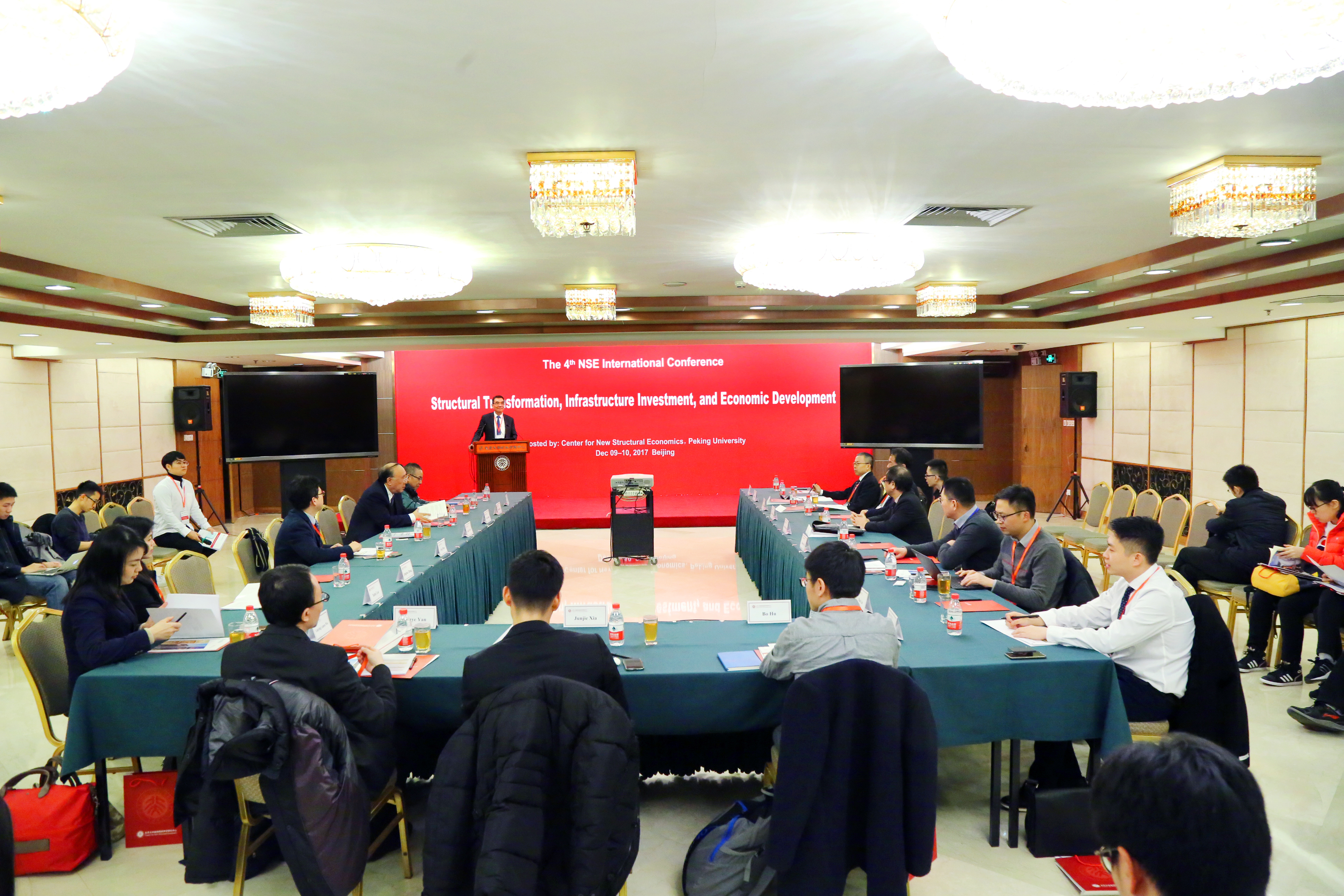
The 4th New Structural Economics International Conference was held during 12/9 to 12/10 at Peking University. The theme of this conference was Structural Transformation, Infrastructure Investment and Economic Development. Professor Justin Yifu Lin, Mr Qifan Huang, Professor Shang-Jin Wei, Professor Juzhong Zhuang and Professor Jong-Wha Lee gave keynote speeches during the conference. More than 10 scholars from different institutions gave talks on academic papers.

Professor Yong Wang, the chair of the conference, Academic Deputy Director of Center for NSE, made a brief introduction of the conference.
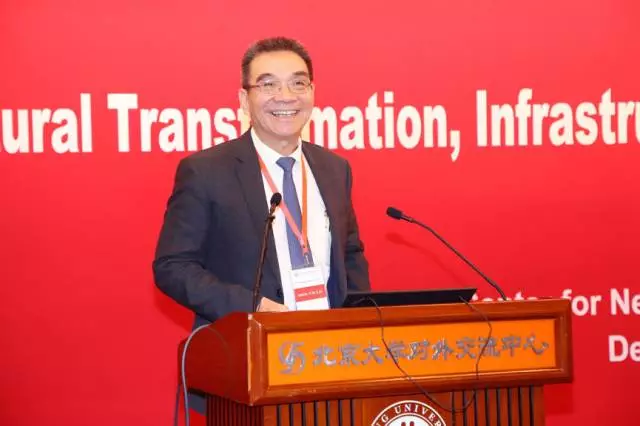
Professor Justin Yifu Lin, the Deputy of Center for New Structural Economics, gave the opening remarks with a keynote speech entitled, “the Belt and Road Initiatives and New Structural Economics”. China has grown from a poor and closed country to the second largest economy since 1978. The successful development relies on the dual-track reforms as well as infrastructure investment. Since China is becoming a larger and more important economy in the world, China should take larger responsibility for world development. After World War II, developed countries provided a large amount of aid to developing countries which mainly supported education, health, humanitarian aid and social security systems. However, the actual effect on economic growth was far from satisfactory. From the perspective of new structural economics, these aid did not solve the real bottleneck in the development of developing countries, which is the lack of infrastructure.
Against this background, China proposed the Belt and Road Initiative in 2013. The basic objective is to build the infrastructure connecting Eurasia and Africa, to form a community of common destiny and responsibility, and achieve mutual benefits and win-win results. As the initiator, China has four comparative advantages. First of all, China's production capacity in infrastructure construction accounts for more than half of the world's total, and over the years it has cultivated a competitive engineering and construction team; secondly, China has 3 trillion foreign exchange reserves and high saving, which can be used to support Infrastructure construction; thirdly, the developing countries could achieve successful transformation by seizing the window period while the labor-intensive industries in China are transferring out; fourthly, the experience of China transferring from an agricultural economy to a modernized has reference value for developing countries. The Belt and Road initiative not only brings opportunities for developing countries, but also benefits other countries. It provides demand for resource-producing countries, and the development of developing countries creates demand for high-income countries. Therefore, it can provide new development opportunities for international development and promote common prosperity of the world.

Mr Qifan Huang made a keynote speech entitled "Infrastructure Construction and Financial Management" based on his working experience in Chongqing, China. The speech mainly discusses how the local government should build a sound financial management system to support the development of local infrastructure and economic development. Mayer Huang summed up the principle of "ten MUSTs" and "ten NOs".
The first is to insist on conservation of the tax source. Mayor Huang took Chongqing as an example and discussed the influence of low tax rates and cost reductions on firm performance and local development. Second, the local governments should maintain a dynamic balance of general expenditures. Thirdly, the government needs to make infrastructure investments. The resulting debt ratio can not exceed the warning line and the cost of debt can not be too high. Fourth, local government must be good at building a strong, trustworthy investment and financing platform. Fifth, an active fiscal policy should be good at mobilizing social capital through fiscal capital instead of financing debt and increasing government debt. Sixth, local governments should make good use of land finance, but do not deliberately push up land prices and damage the land environment. Seventh, local government must do a good job in social security. Eighth, the government's investment in public finance should be devoted to the livelihood projects. Ninth, the local government should rely on market to allocate certain resources such and generate tax revenue, but can not resort to arbitrary charges. Tenth, fiscal reform should try its best to optimize the allocation of resources.
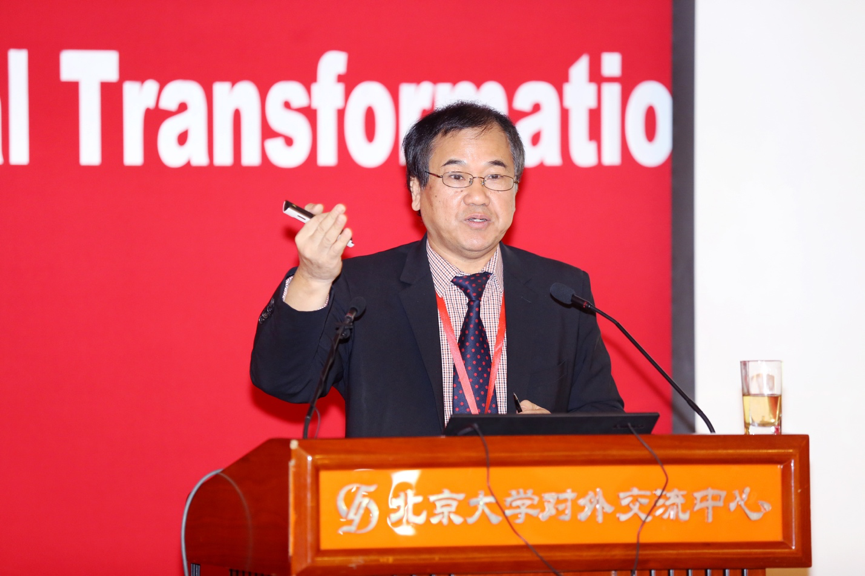
Professor Juzhong Zhuang gave a keynote speech entitled “Meeting Asia’s infrastructure needs”. He first points out the key role of infrastructure in economic development. The empirical evidence shows positive correlation between infrastructure and GDP per capital, as well as negative correlation between infrastructure and poverty. Secondly, Professor Zhuang summarize the conditions of infrastructure investment in Asia. Infrastructure investment in Asia varies significantly across countries. Also, the region’s infrastructure gaps remain huge. More and better infrastructure is needed in Asia compared with OECD countries. Thirdly, Asia’s infrastructure needs are estimated empirically. The results show that as a whole, the gap between infrastructure stock and needs in the future 5 years equal to 2.4% of GDP in Asia. Countries should bridge the gap through tax reform, fiscal reforms, and greater use of PPPs, etc.
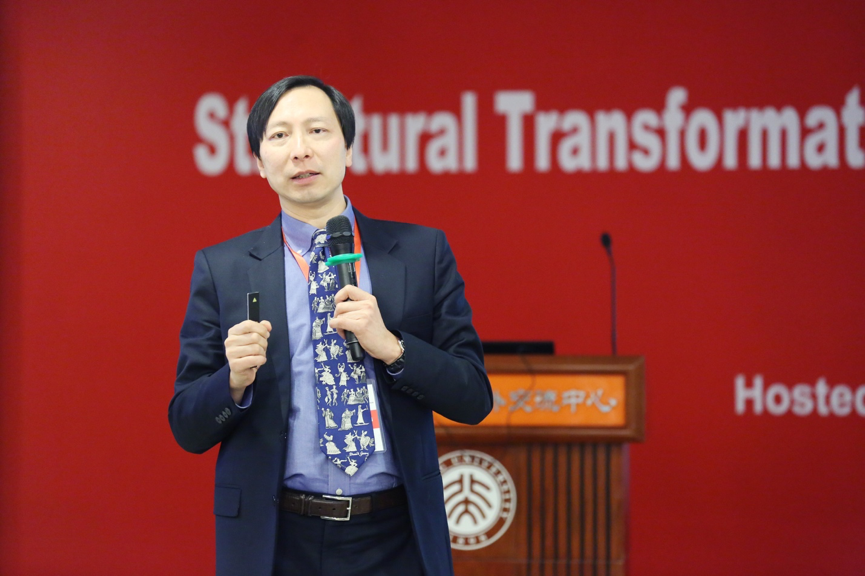
Professor Shang-Jin Wei gave a keynote speech entitled “Measuring and overcoming barriers to trade in services: the role of international competitive bidding”. A typical infrastructure project has a service component and a goods component. The efficiency of one project would require global sourcing therefore barriers to service trade and goods trade could reduce efficiency. The paper assesses whether international competitive bidding (ICB) reduces barriers to international trade in services and goods, hence improving efficiency. Using all completed infrastructure projects in Asian Development Bank’s (ADB) 50-year history (by 2016), the paper conducts a Fuzzy Regression discontinuity design (Fuzzy RDD) to address the problem. The results show that ICB helps to lower the barrier in international service trade in the context of large infrastructure projects. The effects of ICB are particularly prominent in low-income and less competitive countries and undermined to some extent in countries with weak constraint on executives. On average, the ICB causes little delay and improves overall efficiency.
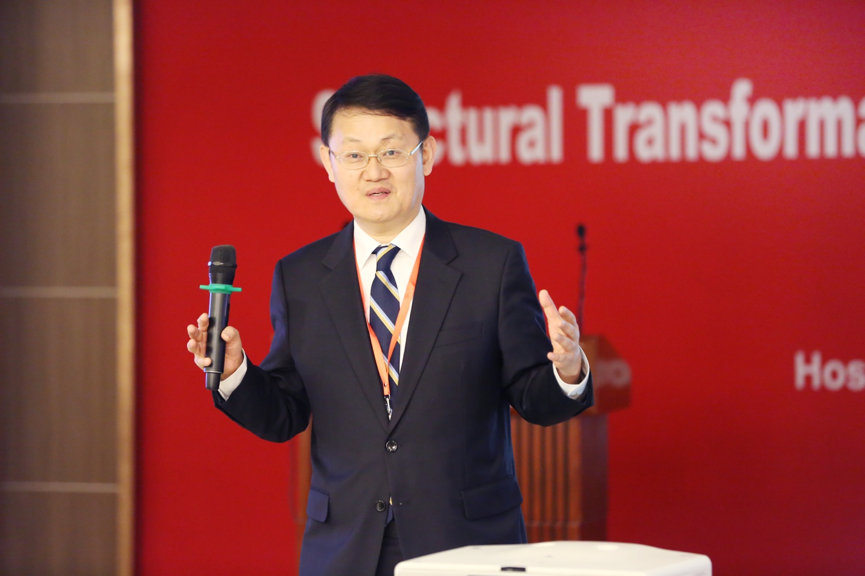
Professor Jong-Wha Lee from Korea University gave a keynote speech entitled “Convergence success and the middle-income trap”. The paper identifies the factors enabling middle-income economies to achieve rapid convergence to a high-income status, and distinguishes “convergence process” from “growth deceleration” and “middle-income trap” episodes. First of all, the paper defines income convergence, growth deceleration, and middle-income trap. Secondly, the paper finds that there is no clear pattern that the relative frequency of growth deceleration is higher when the relative income approaches to the upper middle-income. Thirdly, an empirical analysis shows that a smooth transition to a high-income status of an economy hinges critically on whether it continues to maintain strong demographic factors and sound policies, and successfully improve export competitiveness.
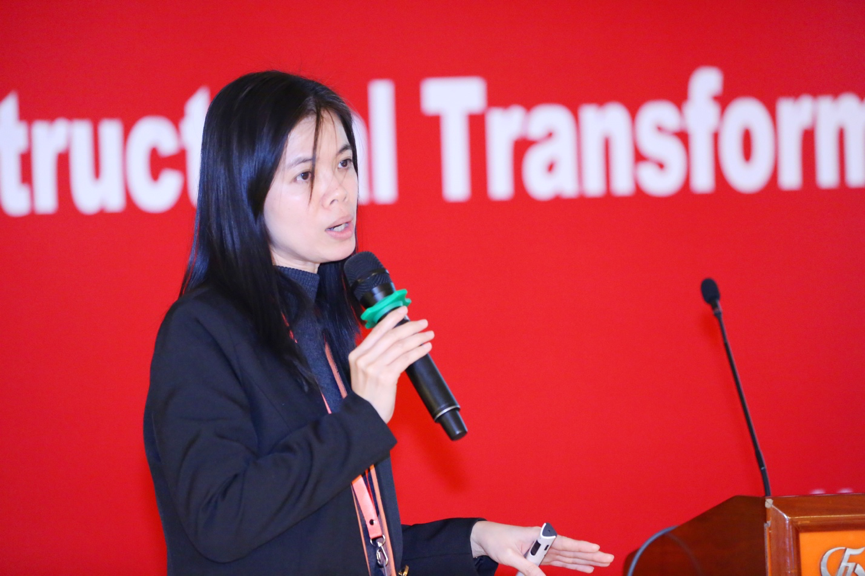
Xubei Luo, Senior Economist in World Bank, gave a speech titled “Transformation through Infrastructure”. She pointed out: First, improving infrastructure to meet the demand in today’s economy is a must. Then, Infrastructure is a necessary but not sufficient condition for growth. Finally, Getting the right infrastructure in the right place is key.
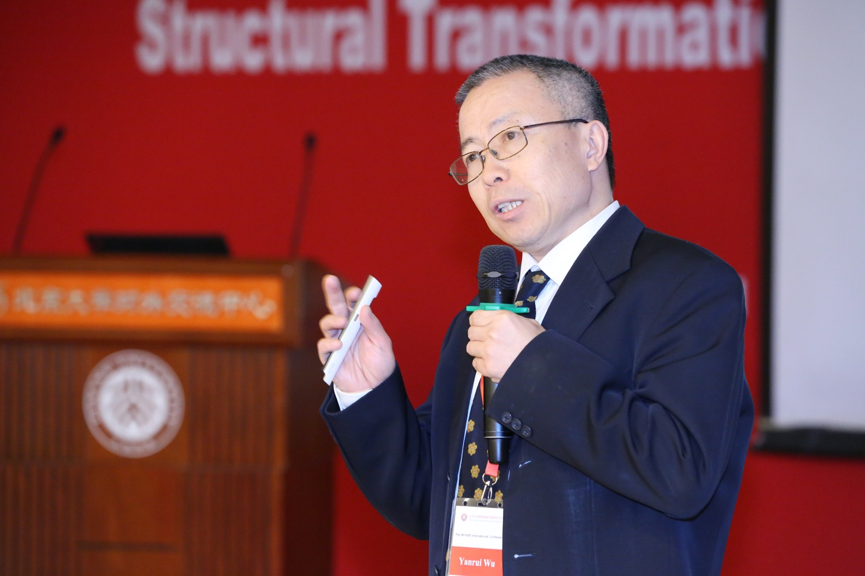
Yanrui Wu, Professor of The University of Western Australia, stressed a thesis titled “Intangible Capital, ICT and Economic Growth in China”. Intangible capital has been treated as a new determinant of economic growth in recent years. There is however very little knowledge about the channels through which intangible capital can affect economic growth in China. Prof. Wu’s paper for the first time, provides macro-level evidence of the intangible capital effects on China’s economic growth. Furthermore, this paper shows that scientific R&D and firm-specific economic competency properties play important roles in the complementary relationship between ICT and intangible capital in Chinese regions. This evidence is consistent with the findings in previous studies of developed countries.
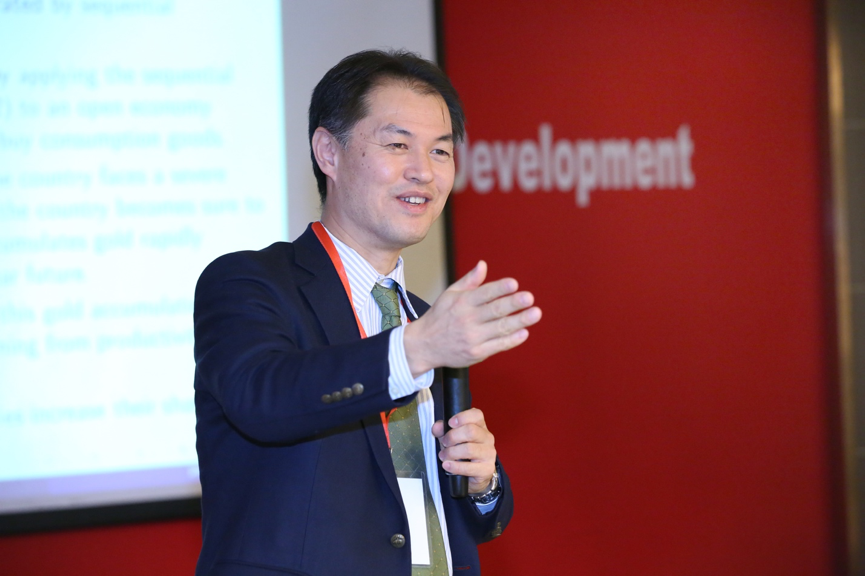
Kenichi Ueda from University of Tokyo made a speech about “Industrial Revolutions and Global Imbalance”. Industrial revolution should be understood as rapid adoption of new technologies in production. However, the data shows such a country accumulate wealth, rather than borrow, which is called a variant of Lucas Paradox. The authors propose a new model to explain this by applying the sequential industrial revolution model of Lucas (2002) to an open economy setup, with a hard-currency constraint to buy consumption goods. Authors conclude that net external assets accumulates because this gold accumulation is likely larger than the capital inflow stemming from productivity difference, which is an answer to Lucas Paradox.
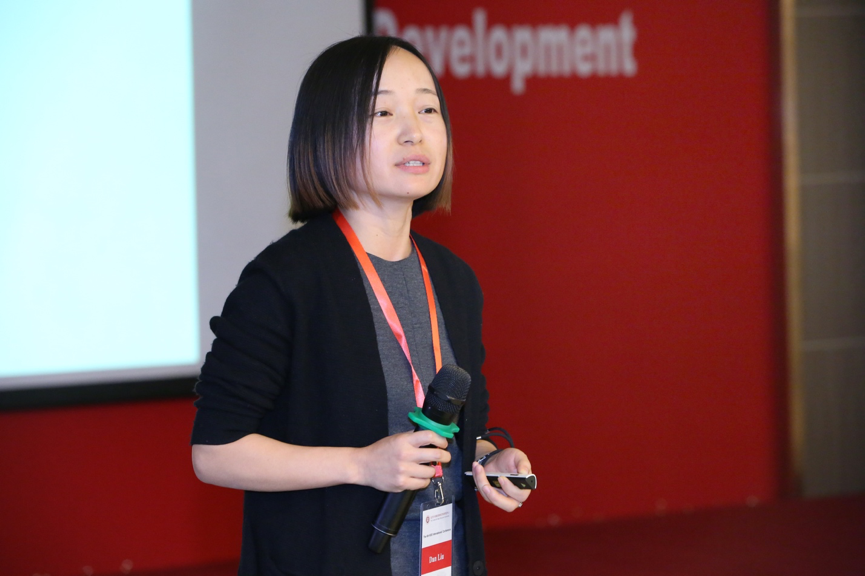
Dan Liu, Associate Professor of Shanghai University of Finance and Economics, reported a paper titled “Highways and Firms' Exports: Evidence from China”. How does infrastructure affect trade? Prof. Liu’s paper investigates this issue by constructing firm- level measure of highway access using GIS information of firms and highways. She found that improvement on highway access can significantly promote firm exports after controlling for firm characteristics in addition to unobservable city and industry time-varying factors. More interestingly, low productivity firms benefit more from highway access than high productivity firms. In addition, highways help firms to expand their export and import scopes.

Zhe Fu, assistant professor from University of International Business and Economics, gives his speech “Bridging the Gap: Infrastructure Investment, Wage Inequality, and Output in China”. The growth rate of infrastructure investment accelerates in China since 2008 and it accounts for a large ratio of GDP all the time. Therefore, the author builds a dynamic model to examine the effect of infrastructure investment on the output and skill premium between high-skilled labor and low-skilled labor. By calibration, he finds that the rising infrastructure investment explains 12% of output increase and 37% of skill premium decrease.
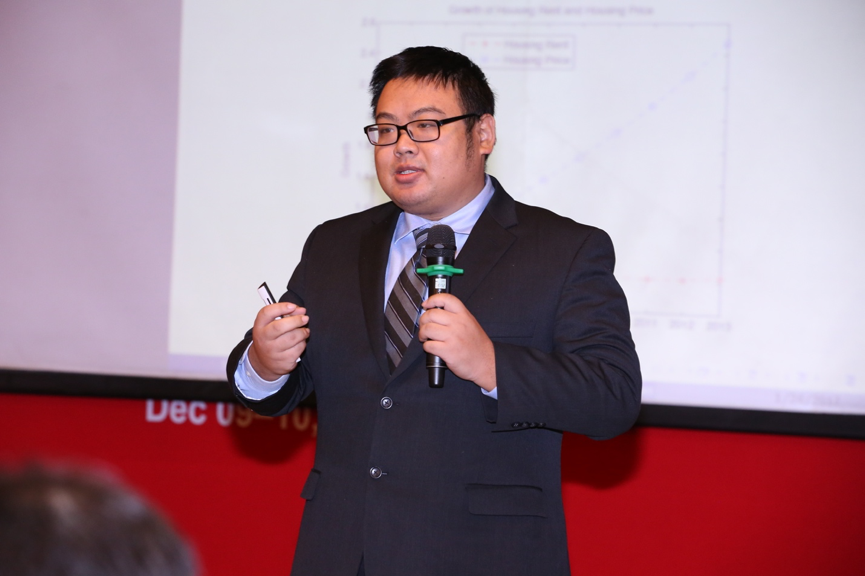
Shenzhe Jiang, assistant professor from Center for NSE, introduces his working paper “Boom and Bust in China’s House Market”. He builds a rational bubble with probability of bubble burst to match the phenomena that during last decade Chinese capital return drops dramatically while the growth rate of housing price seems to be more sustainable. Through the calibrated model, he finds that if bubble bursts, the housing price drops by 39%, and the GDP falls by 3.8%. However, in long term the output level is higher than that without bubble burst.
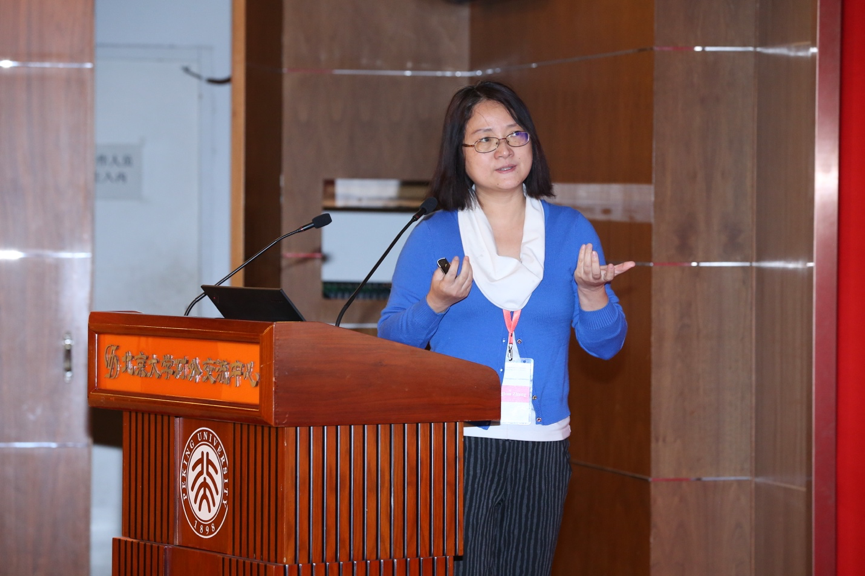
Qinghua Zhang, associate professor from Guanghua School of Management at Peking University, gives a talk titled “To build more outwardly? The spatial pattern of urban land development in China”. This paper studies the determinants of the spatial pattern of urban land development. They first develop a theoretical model to demonstrate how a city leader whose career advancement depends on city economic growth chooses the spatial pattern of urban land development. After that, they test the theory using a large dataset of residential land transactions matched with city leaders from 2000 to 2012. They find robust evidence consistent with the predictions of our model.
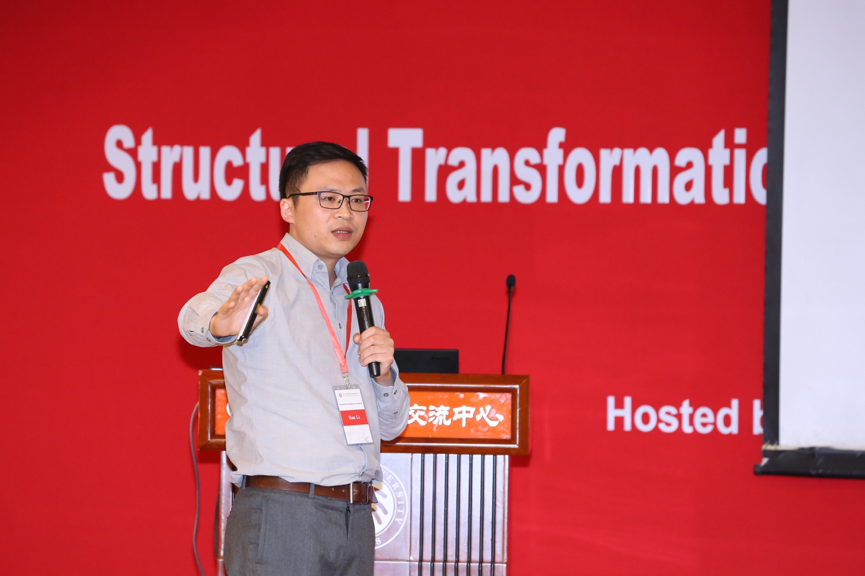
Han Li, professor from Southwestern University of Finance and Economics, gives a talk about “Highway Access and Local Employment Response in China’s Urban Hierarchy”. The authors study the local employment elasticity in response to highway access in China’s counties within a system of cities. They find that rural labor force’s better access to transportation infrastructure lead to the local employments reduction in their own counties.
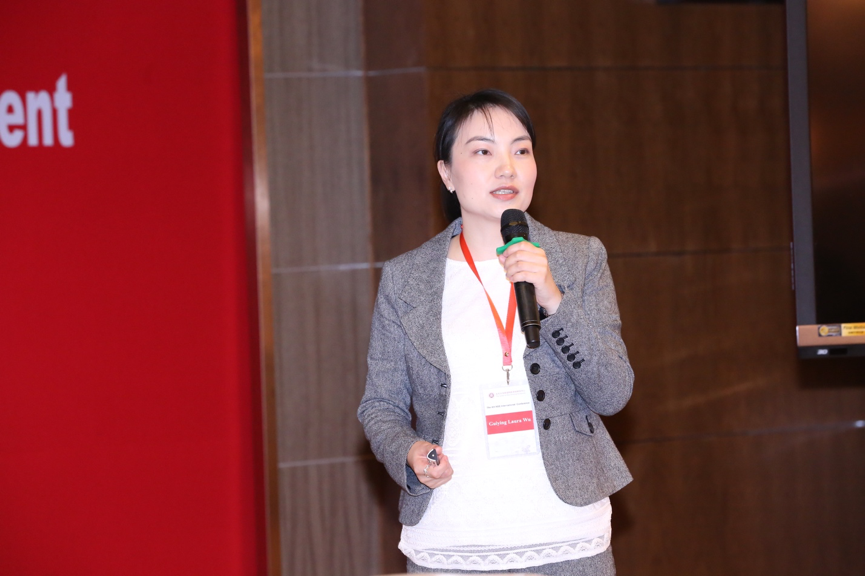
Guiying Laura Wu, assistant professor from Nanyang Technological University, presents her paper “Estimating Productivity of Public Infrastructure Investment”. Wu and her co-authors develop a new approach, using a model of endogenous productivity in a firm-level production function, and matching Chinese firm-level production data with province-level infrastructure data. They find the estimated rates of return are about 6% averaged from 1999 to 2007. The returns triple if national-level spillover effects are taken into account.
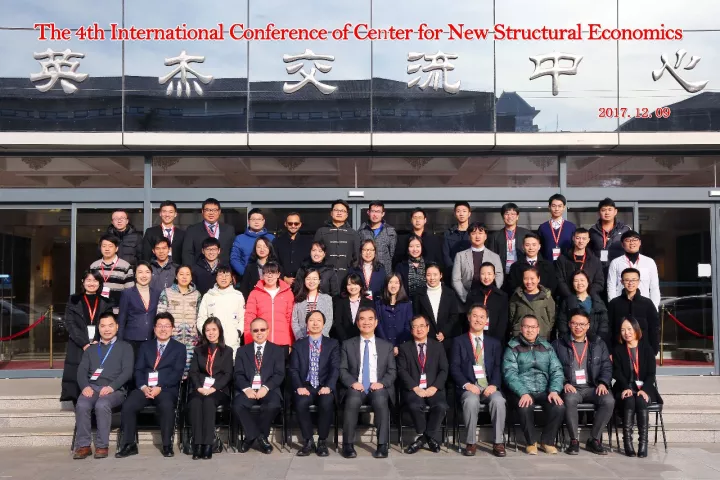
Author: Zhengwen Liu, Rundong Ji, Yunfei Zhang
Proofread by: Shenzhe Jiang

